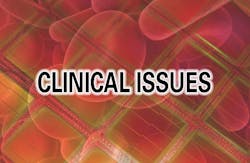For many people, clinical laboratory testing is an unseen side of medical practice and care. However, most of the clinical conclusions doctors and clinicians make regarding a person’s health are based on laboratory test results, allowing a course of action to be recommended and treatment plan implemented.
The era of automation
Clinical chemistry automation is a relatively new field in the combination of chemistry and medicine. The discipline was once documented as “pathological chemistry” or “chemical pathology” with the dedicated purpose of the analysis of bodily fluids for diagnostic and therapeutic purposes. It wasn’t until the early 1900’s that the American Association for Clinical Chemistry (AACC) and the International Federation for Clinical Chemistry (IFCC) introduced the term “clinical chemistry” which today has become one of the most accepted terms in in-vitro diagnostics.1
Clinical chemistry structures a discipline combined of chemistry, immunochemistry, biochemistry, endocrinology, toxicology, engineering, and informatics with the sole purpose of providing the support to clinicians to improve the diagnosis and treatment of patients across a wide variety of diagnostic disciplines.1
Over the last few decades there has been a significant decrease in the number of analytical errors in clinical laboratories much to the fact that laboratories are required to meet very high standards. The technological developments and scientific innovations in the field of clinical chemistry from the early 1950’s to date have been vast, enhancing laboratory capabilities, and providing the necessary support to clinicians and laboratories to improve patient diagnosis and treatment.2
Today presents a new world of automation—a complex integration of robotics, liquid handling, and numerous other technologies with the fundamental purpose of saving time and improving performance through the elimination of human error and reduced risk of cross-contamination.3
With today’s clinical advancements, current technologies include a vast variety of colorimetry/ spectrophotometry, nephelometry, turbidimetry, photometry, ion specific electrodes testing (ISE), and a range of chromatographic and ligand assay methodologies such as chemiluminescence techniques.1
An example of today’s advancements in technology and science can be identified with ELISA based techniques which are notoriously inefficient and are particularly draining on time and personnel due to the manual intervention required. The manual nature of the method also means there is greater potential for human error, ultimately resulting in lack of sensitivity and potential for cross-reactivity.4,5
In today’s laboratory, the transitions from traditional ELISA techniques to an automated method for the detection of the same analyte will significantly improve both cost and time. However, despite the abundant advancements in automation, many clinical laboratories continue to utilize manual methods such as ELISA for some specialized chemistries.4 The move to laboratory automation is still a premise of development, particularly in developing countries where the use of manual techniques is still in use and the availability of resources and high-quality diagnostics are reduced due to detrimental socio-economic factors.6
Continuous flow analysis
Based on meeting the specific needs of the clinical chemistry laboratory, significant innovations involve manufacturers focusing heavily on developments on the introduction of multichannel systems, non-selective batch analyzers, and continuous flow analysis.7 The rise in continuous flow analysis enticed the movements in production and research on the use of discrete analysis with cuvettes and automatic mixing and pipetting of both samples and reagent, ultimately reducing the workflow of clinicians and increasing the accuracy, precision, and reliability of patient results.8 It wasn’t until the 1980’s that truly sparked the move to laboratory automation where the introduction of simultaneous detection of multiple analytes at different wavelengths came into play, ultimately bestowing a new era for in vitro diagnostics.9
Complementing labs and automated instrumentation
In the early 1950’s, to accompany laboratory automation and scientific innovation, ready-to-use reagent kits with instructions for use introduced a very significant innovation to the field of automation, eliminating the process of manually preparing reagent.3 Scientific research and development over the past few decades have increased laboratory testing capabilities and allow for laboratories to significantly reduce time and cost consolidating routine and specialized tests onto one single platform.
An example of how this has advanced clinical chemistry testing is the two main methods for the detection of proteins in patient samples: (1) nephelometry, and (2) immunoturbidimetry. Nephelometry, although traditionally thought to be more sensitive, can be expensive due to higher consumable costs. In addition, nephelometers can be inefficient and are limited by their test menu. Immunoturbidimetry presents labs with the added advantage of consolidating a variety of chemistries on one system lowering laboratory costs as nephelometry requires the use of dedicated equipment and are much slower and require highly trained personnel.
Choosing a chemical analyzer
Choosing a chemical analyzer will depend on the types of tests the laboratory wishes to run and the throughput required. Many other factors include: sample handling, degree of automation, footprint, operational costs, turnaround time (TAT), STAT capabilities, service dependency, and whether the analyzer can handle micro volume samples.
With both semi-automated and fully-automated analyzers, laboratory informatics and process management software has increased heavily over the last two decades. Significant implementation of quality control and interfacing automatically and reliably transmit data to and from various systems. This improves both quality and productivity, creating straightforward operations, requiring users to have minimal training requirements for use.
Today, the advancements in quality control software are designed to allow laboratories to meet industry and international standard requirements while ultimately ensuring accurate and reliable instrument performance.10
REFERENCES
- Durner J. Clinical chemistry: Challenges for analytical chemistry and the nanosciences from medicine. Angew Chem Int Ed Engl. 2010;49:1026–51.
- Olsen K. The first 110 years of laboratory automation: technologies, applications, and the creative scientist. J Lab Autom. 2012; 17:469-80.
- Rosenfeld L. A golden age of clinical chemistry: 1948-1960. Clin Chem. 2000; 46:1705.14.
- Wild D, Sheehan C, Binder S. Introduction to immunoassay product technology in clinical diagnostic testing. Immunoassay Handbook: Theory and Applications of Ligand Binding, ELISA and Related Techniques. 4th Oxford, UK: Elsevier; 2013.
- Hawker CDED. Laboratory automation: Total and subtotal. Clin Lab Med. 2007; 27:749-70.
- World Health Organization. World Health Statistics. World Health Organization; Geneva, Switzerland: 2014.
- Rosenfeld L. A golden age of clinical chemistry: 1948-1960. Clin Chem. 2000 Oct; 46(10):1705-14.
- Sarkozi L, Simson E, Ramanathan L. The effects of total laboratory automation on the management of a clinical chemistry laboratory. Retrospective analysis of 36 years. Clin Chim Acta. 2003 Mar; 329(1-2):89-94.
- Durner J. Clinical chemistry: Challenges for analytical chemistry and the nanosciences from medicine. Angew Chem Int Ed Engl. 2010;49:1026–51.
- Melanson SE, Lindeman NI, Jarolim P. Selecting automation for the clinical chemistry laboratory. Arch Pathol Lab Med. 2007;131:1063–9.
About the Author

Martin Conway, BSc
Martin Conway, BSc, serves as Marketing Team Lead for Chemistry, Immunoassay, Molecular and Point of Care Analyzer at Randox Laboratories.
